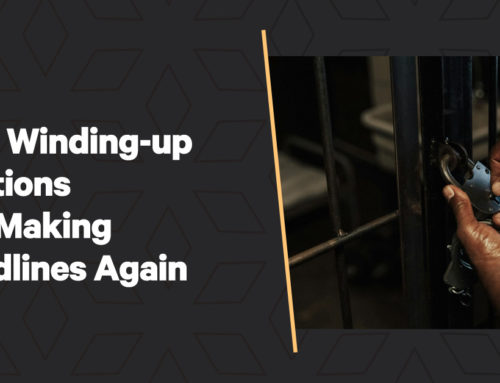There’s been an alarming increase in construction company insolvencies across the UK in 2024. This trend has raised concerns among industry stakeholders, from contractors and suppliers to financial institutions and policymakers. In this blog, we look at the factors contributing to this growth, the implications for the construction sector, and the key steps companies can take to survive these turbulent times.
Understanding the surge
Many key factors have contributed to the rise in construction company insolvencies:
-
Economic headwinds
One of the main drivers behind the leap in construction company insolvencies is the challenging economic environment. The UK economy has faced significant headwinds in recent years, including Brexit-related uncertainties, the lingering effects of the COVID-19 pandemic, and rising inflation, not to mention the recent change in Govenernment. These factors have collectively squeezed margins for construction companies, leading to increased financial distress.
-
Supply chain disruptions
Global supply chain disruptions have worsened the situation. The construction industry relies heavily on a steady supply of materials, and delays or shortages can have a ripple effect on project timelines and budgets. In 2024, disruptions in the supply chain caused by geopolitical tensions and logistical bottlenecks have intensified, pushing many firms to the brink of insolvency.
-
Labour shortages
Labour shortages have also played a key role in the surge in construction company insolvencies. The sector has struggled to attract and retain skilled workers, leading to increased labour costs and project delays. With fewer hands on deck, companies have found it challenging to meet deadlines and maintain profitability.
Financial strain on construction companies
Several key factors have intensified the financial pressures on construction firms:
-
Rising costs
The cost of raw materials, energy, and labour has been on an upward trajectory, putting immense pressure on construction firms. Many companies have found it difficult to pass on these costs to clients, leading to shrinking profit margins. The cumulative effect of these rising costs has pushed several businesses towards insolvency.
-
Cash flow issues
Cash flow management is essential in the construction industry, where projects often span several months or even years. Delayed payments from clients, coupled with the need to pay suppliers and workers on time, have created a cash flow crunch for many firms. This liquidity squeeze has been a big factor behind the increase in construction company insolvencies in 2024.
Impact on the construction sector
The rise in construction company insolvencies has led to several significant consequences:
-
Project delays and cancellations
The jump in insolvencies has had a ripple effect on ongoing and planned construction projects. Numerous projects have faced delays or outright cancellations due to the financial instability of construction firms. This disruption has affected not only the companies involved but also the broader economy, as construction is a key driver of economic growth.
-
Loss of jobs
The wave of construction company insolvencies has also led to significant job losses. As firms shut down or scale back operations, thousands of workers have become unemployed. This not only affects the livelihoods of those directly involved but also has broader social and economic implications.
-
Impact on suppliers and subcontractors
The insolvencies have had a domino effect on the supply chain. Suppliers and subcontractors, who often rely on regular payments from construction firms, have faced financial difficulties, too. This interconnectedness has magnified the impact of each insolvency, spreading the financial strain across the sector.
Strategies for construction companies
Here are several strategies to help construction companies handle financial difficulties and enhance stability:
-
Strengthening financial management
In these challenging times, robust financial management is more important than ever. Construction companies must focus on improving their financial planning and forecasting. That includes closely monitoring cash flow, optimising resource allocation, and implementing strict cost control measures.
-
Diversifying revenue streams
To mitigate the risk of insolvency, construction firms should consider diversifying their revenue streams. This could involve expanding into new markets, offering more services, or exploring alternative business models. Diversification can provide a buffer against economic fluctuations and reduce reliance on a single income source.
-
Enhancing operational efficiency
Operational efficiency can significantly impact a company’s bottom line. By adopting innovative technologies and streamlining processes, construction firms can improve productivity and reduce costs. Embracing digital tools for project management, procurement, and communication can lead to more efficient operations and better financial outcomes.
-
Strengthening relationships with stakeholders
Building strong relationships with clients, suppliers, and financial institutions can provide a safety net during tough times. Transparent communication and collaboration can help companies handle challenges more effectively. Establishing trust with stakeholders can also facilitate better payment terms and access to financing, which are essential for maintaining liquidity.
The role of government and industry bodies
Here are a couple of important measures to mitigate the rise in construction company insolvencies:
-
Policy interventions
The government has an important role to play in addressing the rise in construction company insolvencies. Policy interventions, such as financial support packages, tax relief, and incentives for innovation, can provide much-needed relief to struggling firms. What’s more, investment in infrastructure projects can create new opportunities for the construction sector, stimulating growth and employment.
-
Industry support
Industry bodies and associations must also step up to support construction companies. Providing access to training, resources, and networking opportunities can help firms build resilience. Advocacy for fairer payment practices and greater regulatory oversight can protect businesses from unfair practices and financial instability.
Looking ahead
While the growth in construction company insolvencies this year is concerning, it also presents an opportunity for the sector to rethink and reinvent itself. By adopting strategic measures and leveraging support from stakeholders, construction firms can manage these challenging times and emerge stronger.
The construction industry has always been a foundation of the UK economy, and, with the right approach, it can continue to play an important role in the nation’s growth and development. All stakeholders must work together to address the current challenges and build a more resilient and sustainable future for the construction sector.
Get in touch
If your construction business faces financial difficulties, don’t wait until it’s too late. Our expert team specialises in helping companies deal with insolvency and finding the best solutions tailored to your needs. We understand the unique challenges of the construction industry and are dedicated to providing support every step of the way. Call us on 0800 246 1845 or email us at mail@leading.uk.com to discuss your situation. Let us help you turn things around and build a stronger, more resilient future for your business. Together, we can overcome any obstacle and secure a prosperous path forward.






